
Facepainting
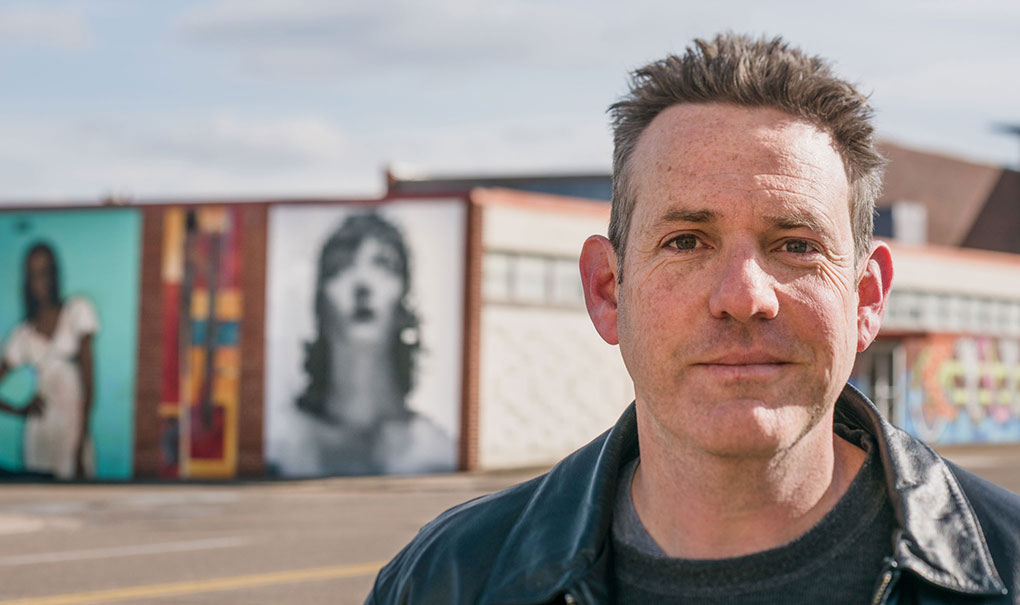
You won't find Chattanooga muralist Kevin Bate painting alone in a quiet studio. You won't find him in a gallery, surrounded by art aficionados, encompassed by his work. You'll find Kevin Bate on the streets.
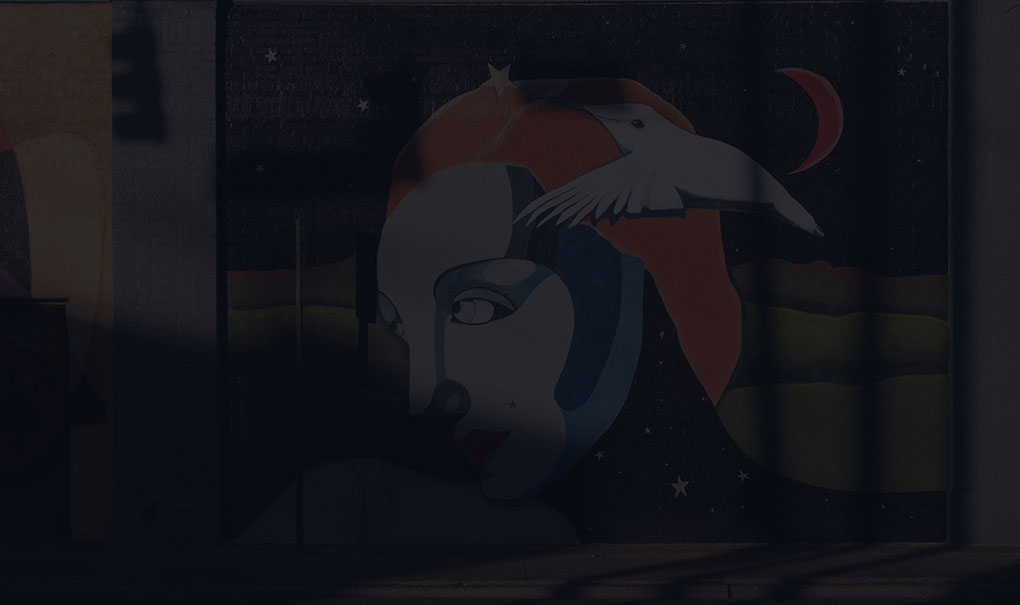
And not the “nice” streets. Not the city's meandering riverside roads or charming thoroughfares, but rather, the inner city — and historic heart — of Chattanooga: Kevin is currently focusing his work on Highland Park. It's also where he lives, a neighborhood that has been there from the start, that once thrived, that now struggles not to be forgotten, or worse, ignored.
Thanks to Kevin, and a team of artists he has assembled, large-scale murals are animating and enlivening a growing number of Highland Park building walls that for years were dull and empty. It's a transformation, the turning of something raw into something beautiful. For Kevin, that's what art is: less about creation, more about change. And in a sense, that's art for many artists: they don't create their medium — they mold and shape what already exists, drawing out the potential in the ordinary or blank or ugly.
that's what art is: less about creation, more about change.
What makes Kevin different, perhaps, is that he loves his canvas for what it is, even before it becomes something beautiful. Even if it never does.
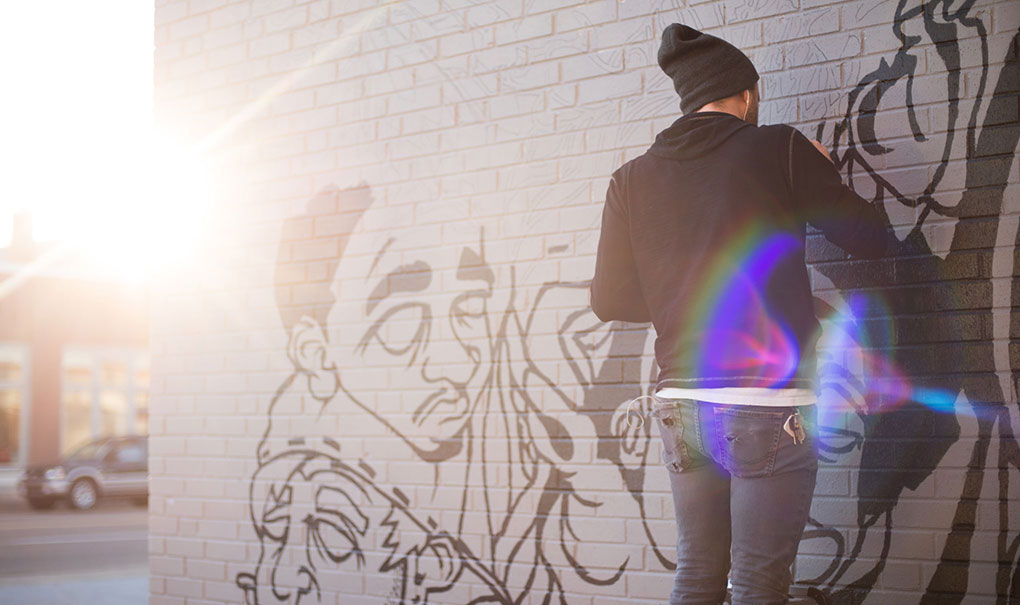
“I love this part of the city. The architecture, the history,” Kevin says. “I came here in 1994, and the morning after I arrived, I woke up and decided it would be my home. I couldn't believe people who lived in Chattanooga for so long thought so poorly of this place. I felt that we needed to show them what it really is.”
That aspiration has led to Kevin's latest professional endeavor: the McCallie Walls Mural Project, which launched this year. A “drive-thru gallery” featuring large-scale murals, Kevin's artistic invigoration of the Highland Park corridor was made possible thanks to a MakeWork Grant. The painting began in the spring, after two years of gathering artists, identifying mural-friendly spaces and coordinating with property owners.

“There are big, ugly walls down here. We're taking advantage of that – using them to make this area look and feel less industrial,” Kevin says. “People will see art on the walls, then they'll see empty storefronts across the street, and they'll think, I've always wanted to open a pizza parlor or a barcade or a law practice. Business, and life, will come.”
Kevin's murals are a different kind of public art. An accidental experience for unsuspecting viewers. They're waiting in the cold for a late bus, or silently cursing a red light that won't turn green, or making a coffee run before another long day at the office. They're distracted passersby, unaware that they're attending an art exhibition until they look up at a building that they realize isn't a building at all, but a larger-than-life canvas. For Kevin, witnessing that moment is rewarding, fulfilling, validating – as an artist and as a human.
“Sometimes when I'm driving by, I see someone quietly gazing at the murals,” Kevin says. “They've gotten a huge response. And I like that people have strong reactions to them, positive or otherwise, because that makes them meaningful.”
In talking with him, it's clear that Kevin has strong reactions himself– to almost everything. This isn't a guy who hems and haws about his direction in life; he goes with his gut, even when it's not convenient or easy or according to plan.
Take his early years, for example: after discovering a knack for drawing in high school, he decided that a formal arts education was right for him. But then, suddenly it wasn't. And that was okay.
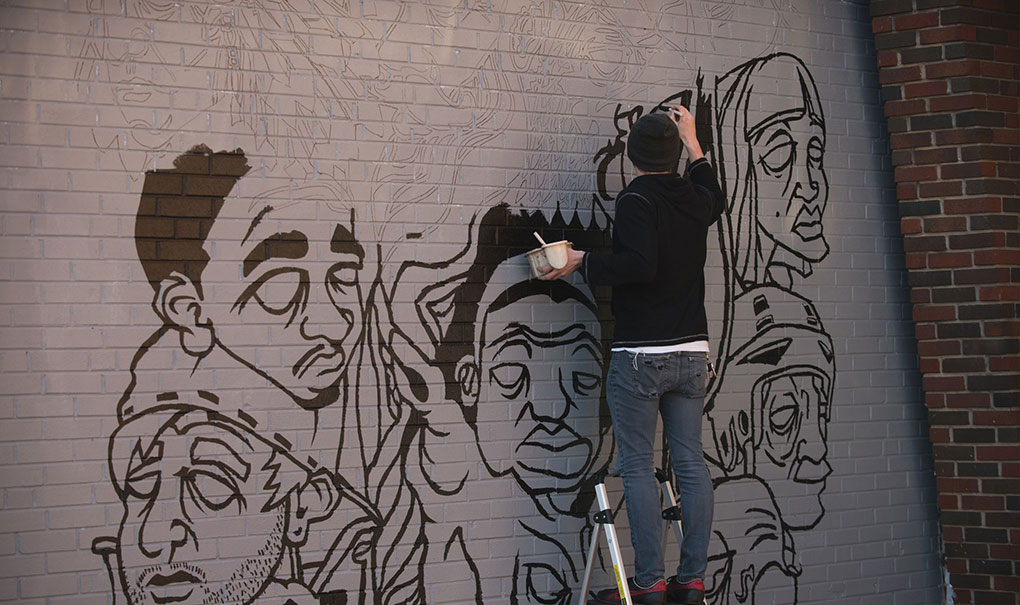
“It seemed that people didn’t want to learn about art. They just wanted to learn how to be artists,” Kevin says. “A lot of art speak, you could say. I wanted to be around more creativity.”
After leaving art school, he earned a journalism degree from the University of Georgia and worked as a designer for several Atlanta agencies. But it felt more corporate than creative. Once again, he made a swift but heavy decision: not only did he quit his job — he quit Atlanta, and he quit art.
“It was like a break up,” Kevin says. “I went in a completely different direction.”
That direction was Chattanooga, specifically the Tennessee Aquarium, where he put an interest in biology to work as an intern. Fortunately, Chattanooga nurtured his creative spirit that had been beaten into submission. He began painting again — first, just for himself, in a shed behind the house while his infant son slept. He displayed his pieces in local restaurants, and they sold.
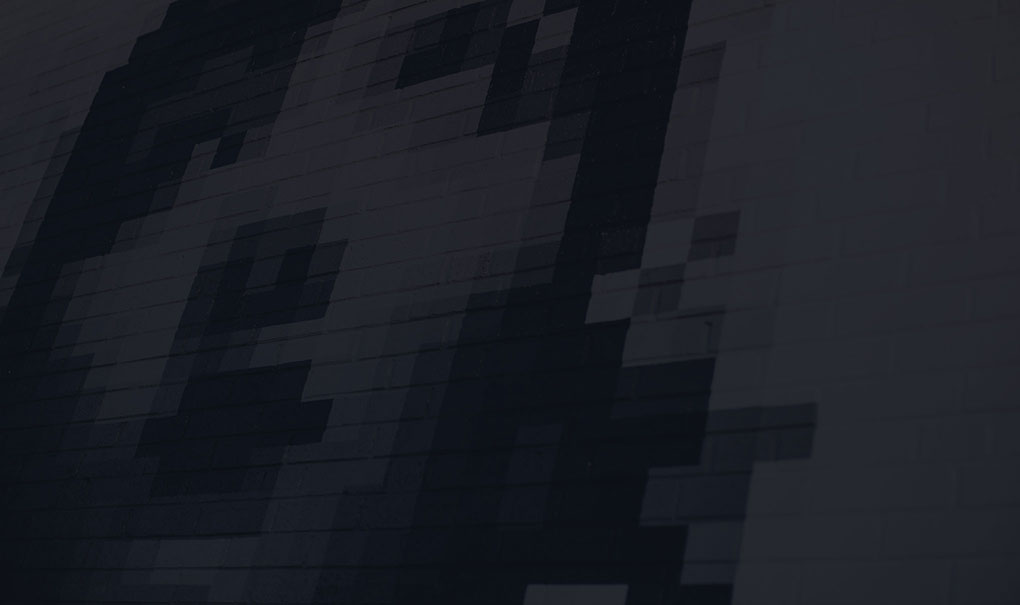
Then, he painted his first mural: a face on a wall.
“It was Samuel L. Jackson, on Main Street,” Kevin says. “The theme for the project was destruction and recreation because so much of the area was being rebuilt. Jackson's story was perfect for it: he was from Chattanooga, he had a hard time growing up, but he made it through the other side and became a star. It's a lot like Main Street.”
That mural was the first of many. Since then, everything about his work has grown: his scope, his tools, his team. And of course, there's the McCallie project. His purpose, though, remains the same.
“The last time I was at the Museum of Modern Art, there was a collection simply about bringing more beauty into the world. That was it – there was no other cohesive theme,” Kevin says. “I believe in that idea: we can do better than what's out there. We can live more beautifully. And that's really what this is all about.”